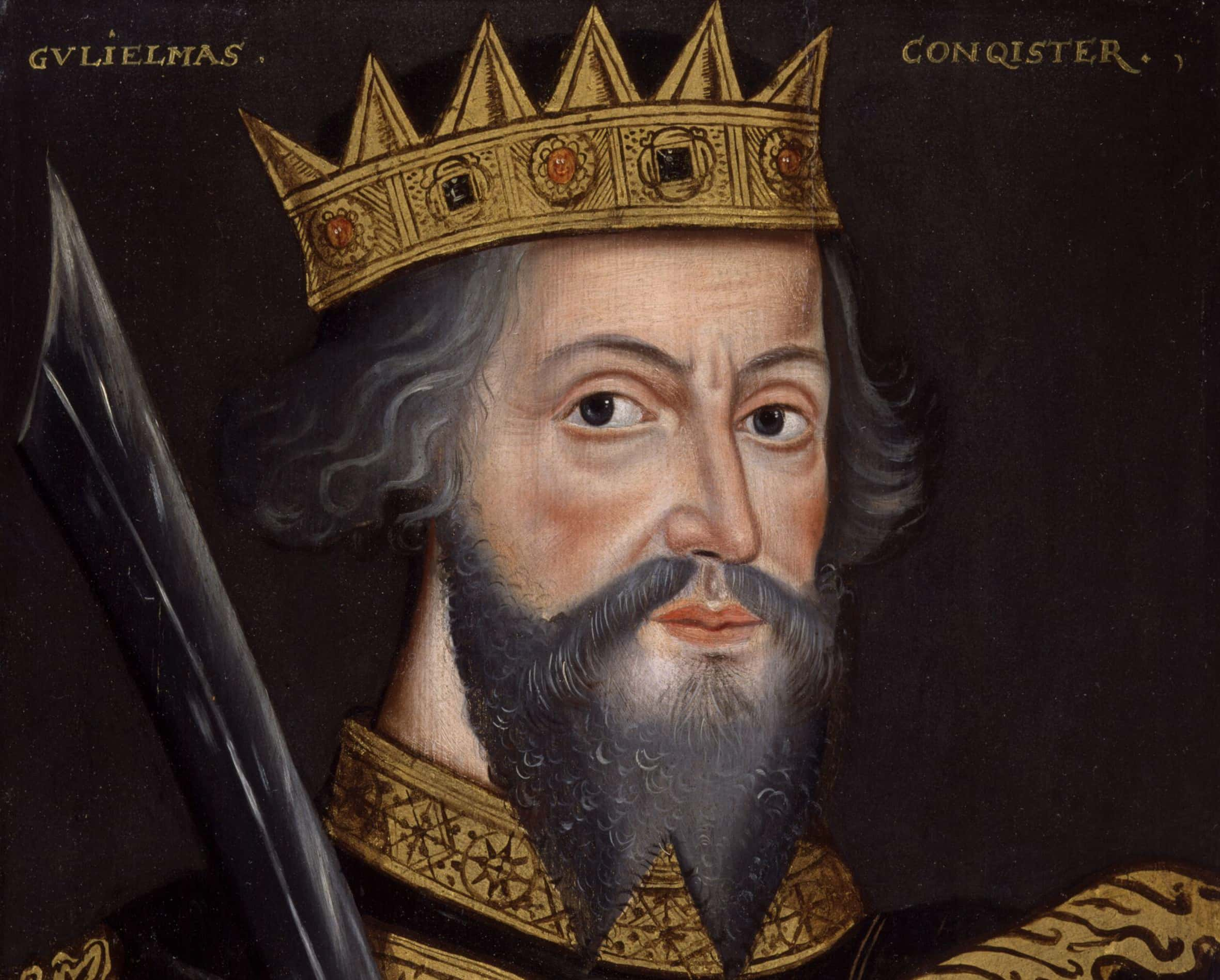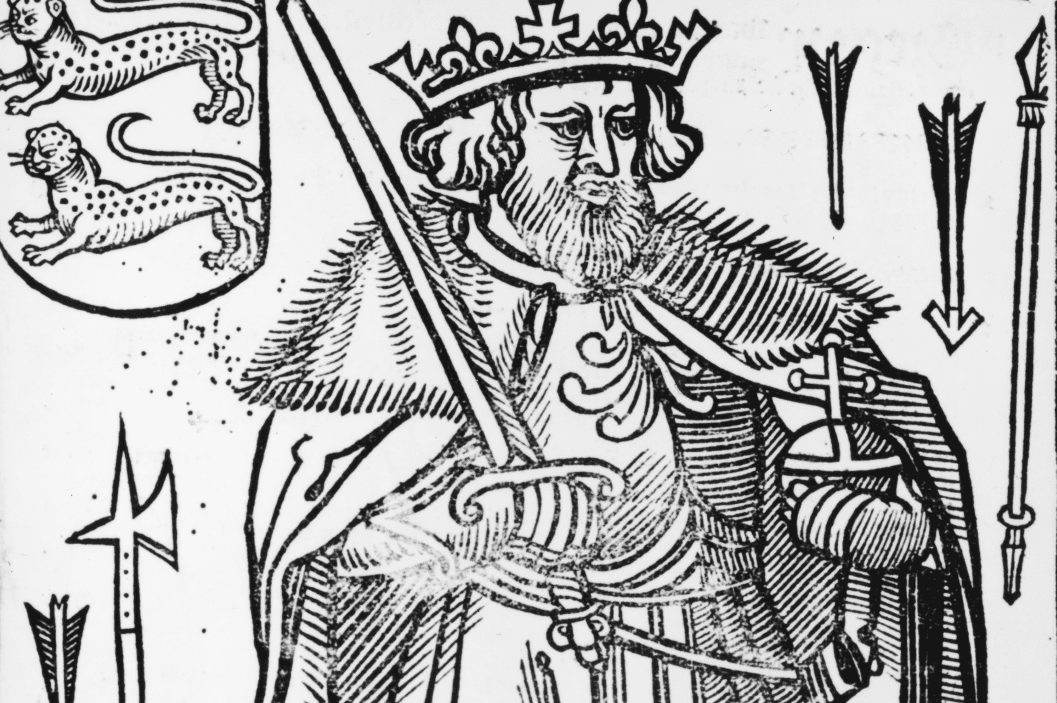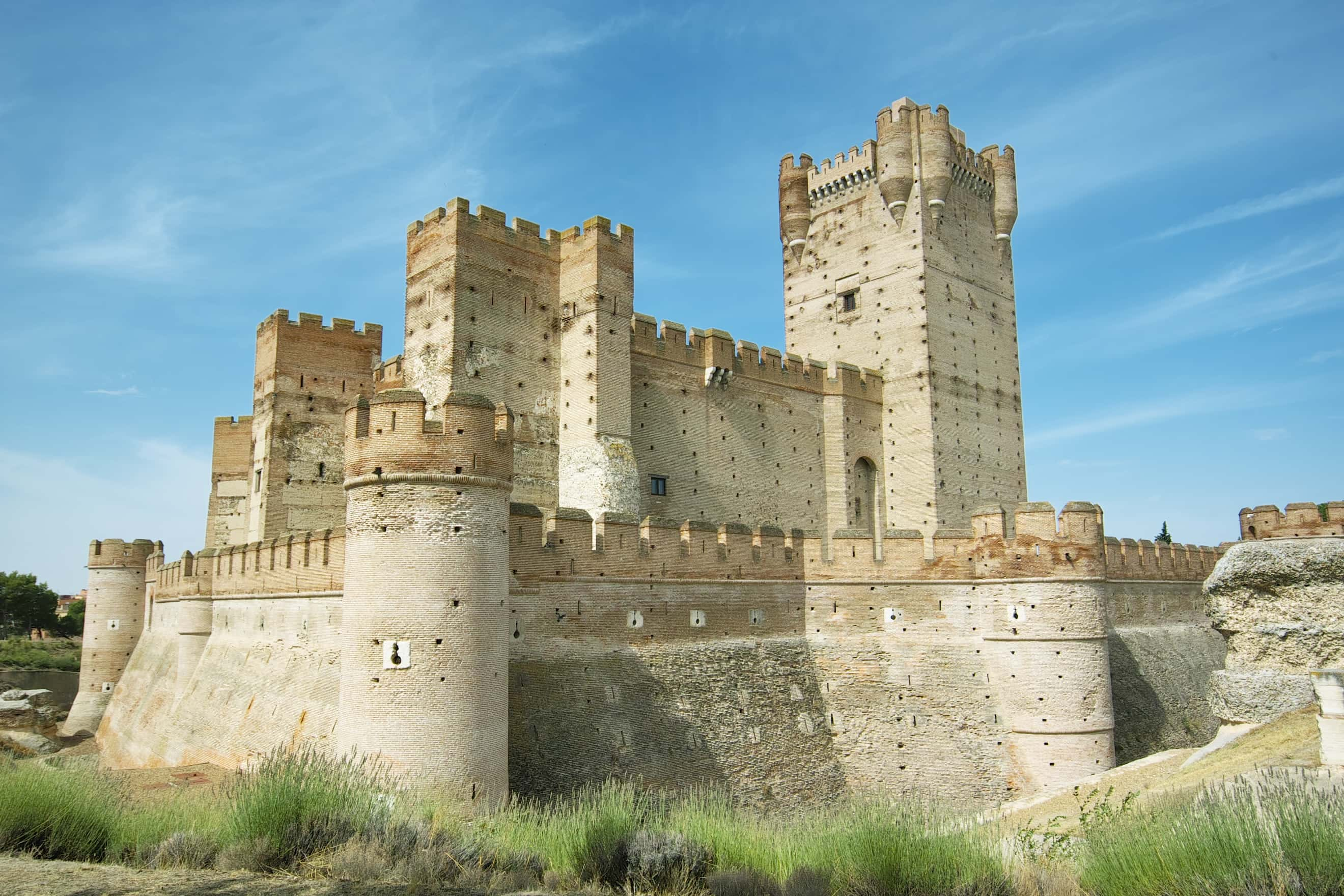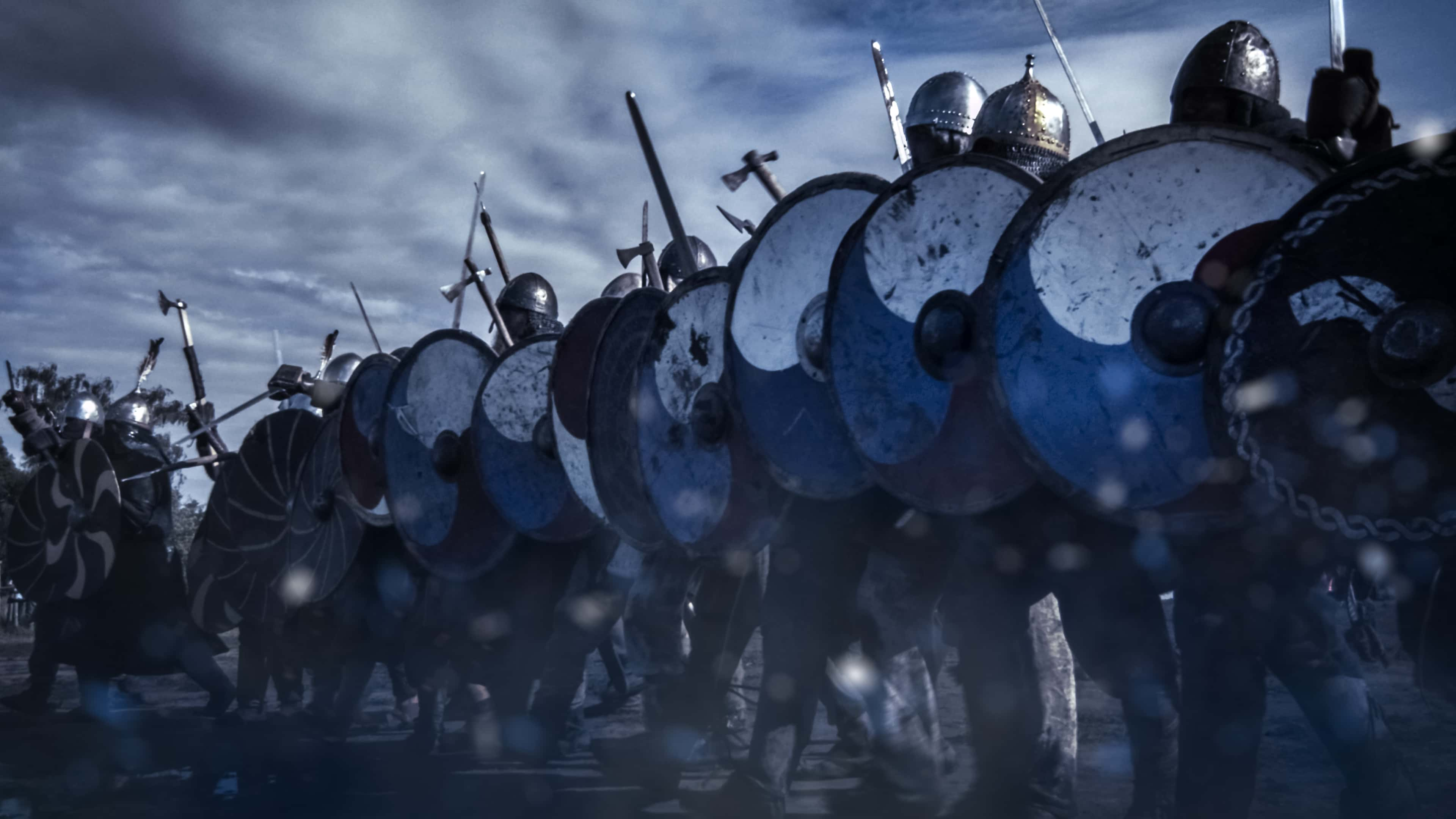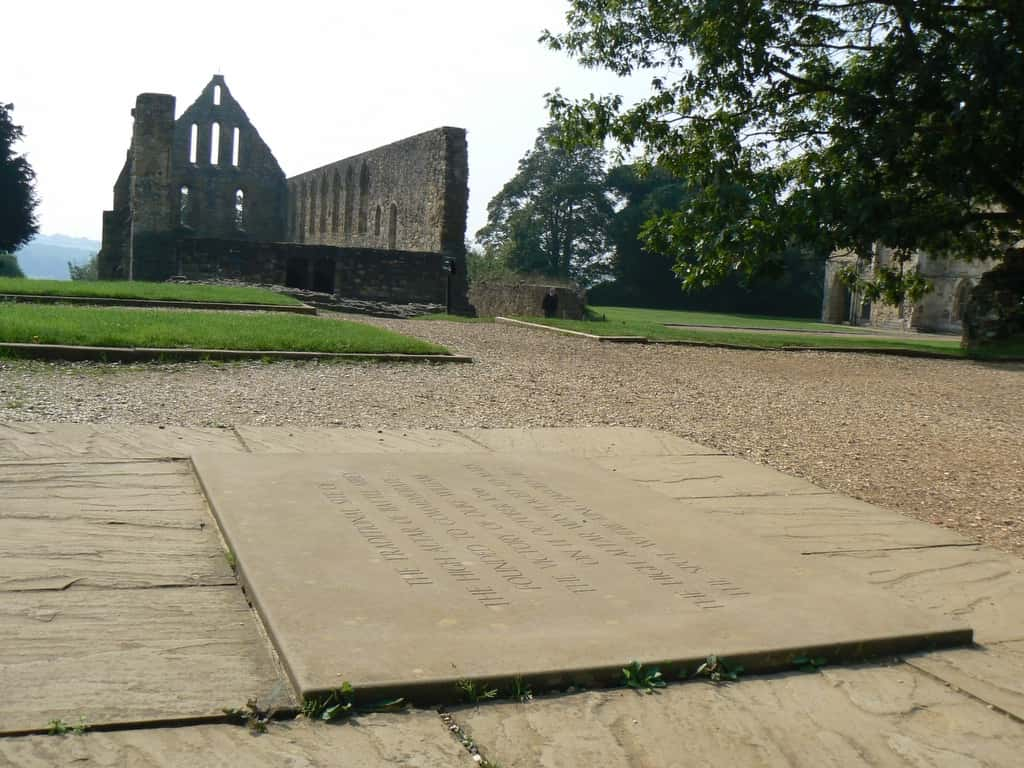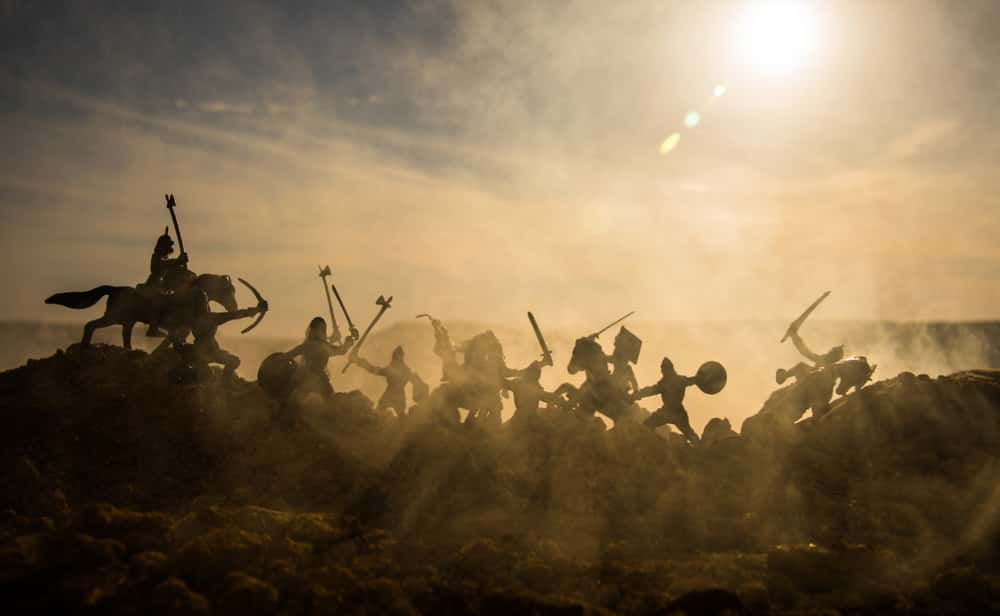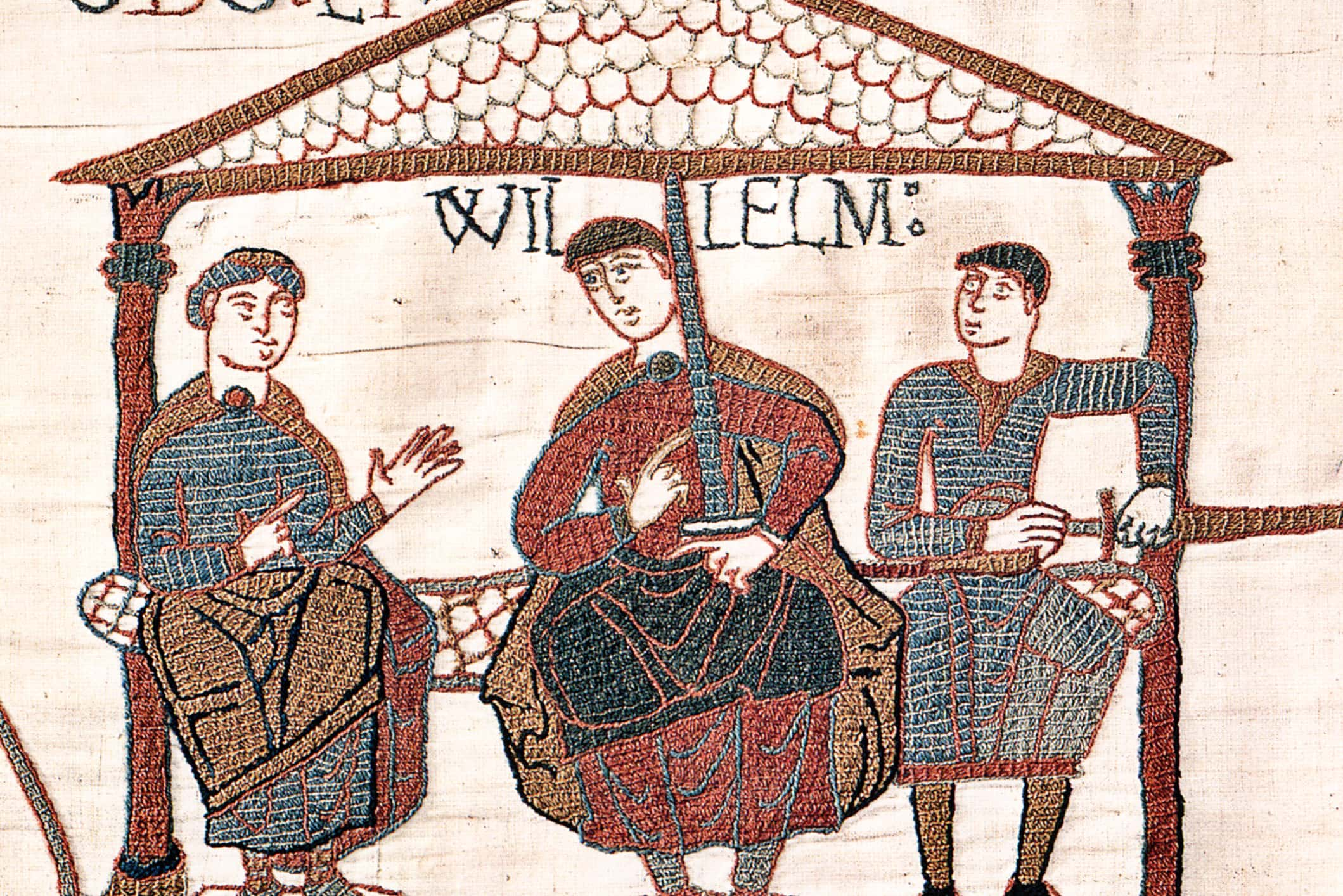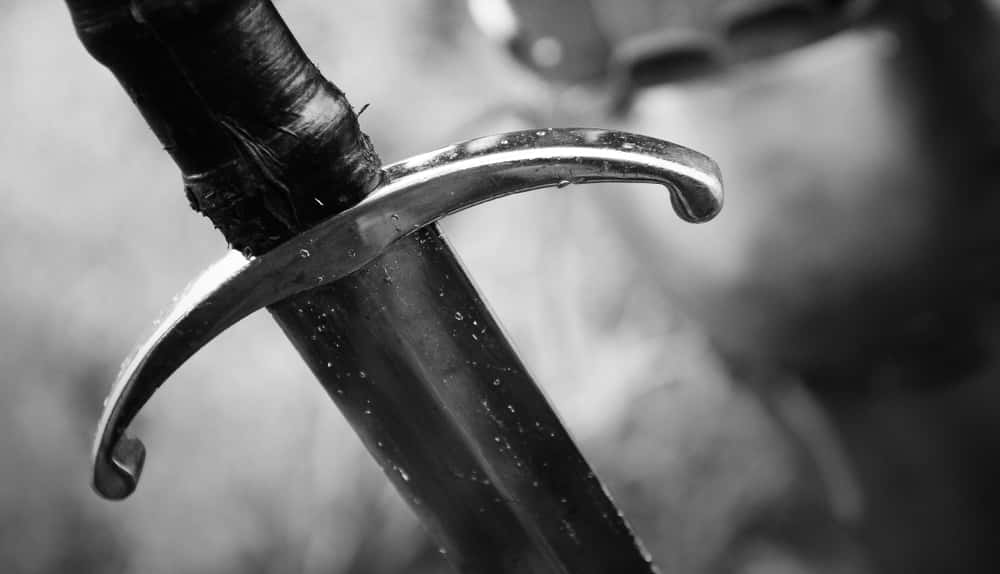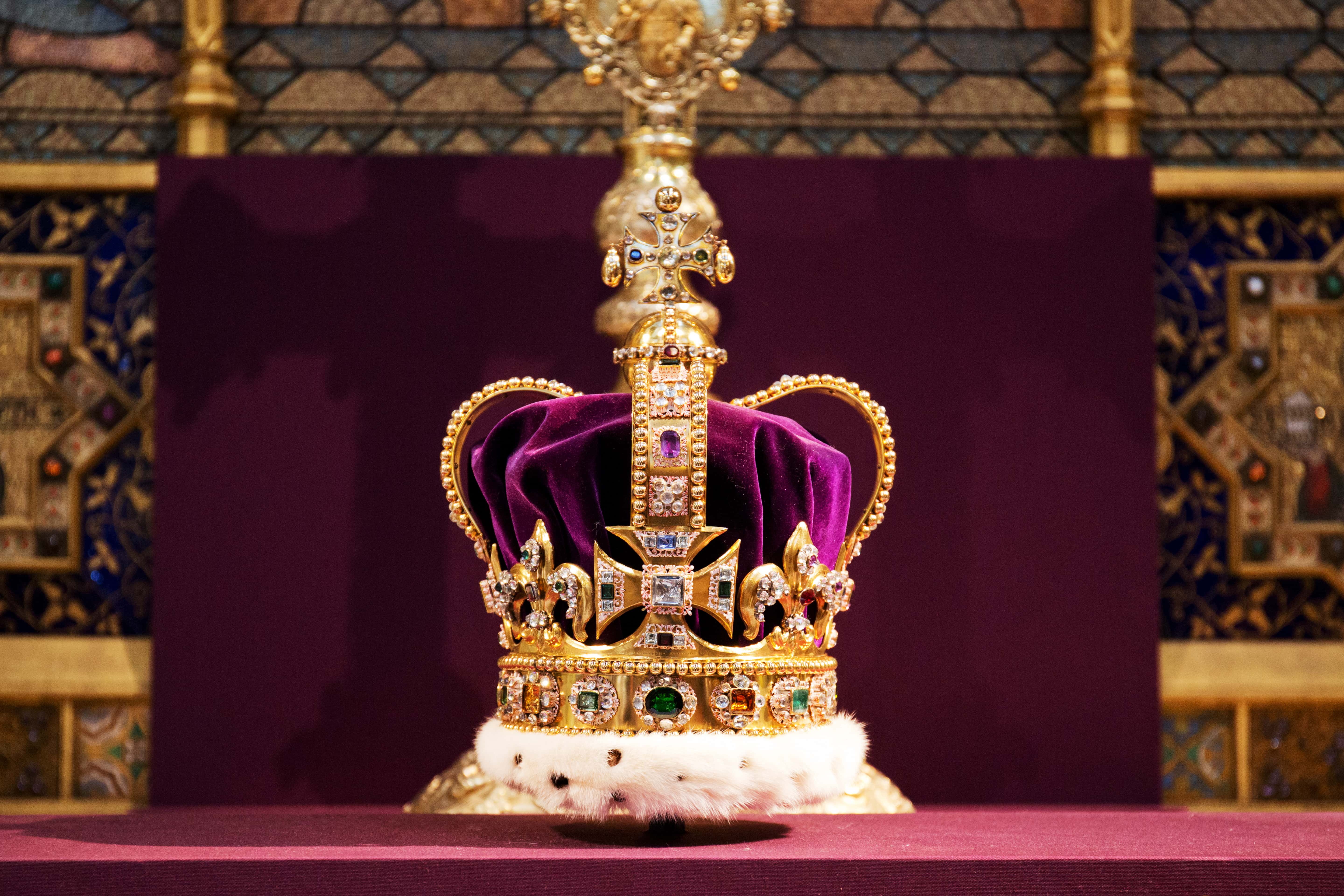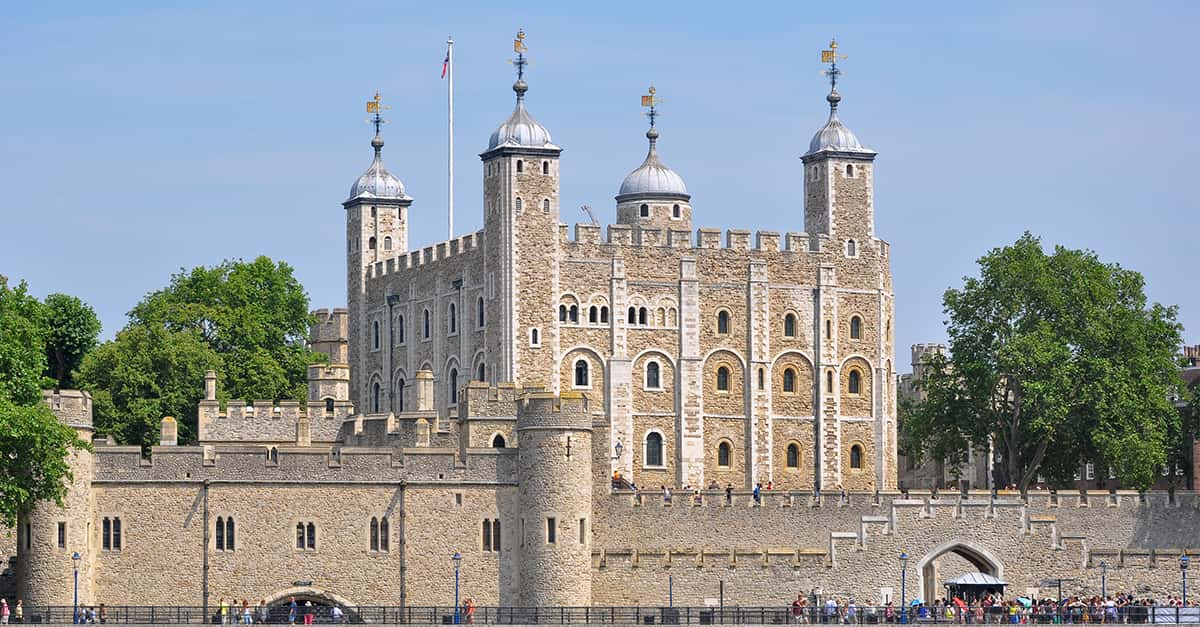Get ready to learn about the mighty Battle of Hastings...
The Kings and Queens of England have a long history of, well, not being very English. Take for instance the current ruling house, the House of Windsor. That sounds like a proper English name, doesn’t it? That’s by design. Until 1917, the House of Saxe-Coburg and Gotha ruled England. King George V changed the name to the more English-sounding “Windsor” during WWI. He realized it was a bit awkward for the English people to be fighting the Germans when their King sounded like a Kraut.
But while the House of Saxe-Coburg and Gotha had German roots, at least all the English monarchs from that line have spoken English. For centuries during the Middle Ages, the Kings of England couldn’t even claim that. From 1066 until 1399, the rulers of England all spoke French. Why? Well, just as today’s royal family traces back to Germany, the kings in those days didn’t have roots in the British Isles. Rather, they came from a family of French Vikings.
But how did a line of Vikings from Northern France come to rule England for centuries? The answer lay on the field of one of the most famous clashes in history: The Battle of Hastings.
The Normans
Let’s back up a little bit: French Vikings? Yes, you read that correctly. While many people know that William the Conqueror, the legendary victor at Hastings, came from Normandy in France, his ancestors came from further north. In 911 AD, the French ruler Charles the Simple allowed a group of Vikings to settle in the French region.
The leader of these Vikings, a man named Rollo, essentially became the first Duke of Normandy—though it would be decades before his descendants actually started using that title.
Despite being from the wild northlands of Scandinavia, the Dukes of Normandy took to their new home quite well. Soon, they learned French and became entrenched in local politics. Then, in 1002 AD, King Æthelred II of England married Emma, the Duke of Normandy’s sister. Suddenly, the Normans became extremely interested in the goings-on at the English court.
Succession Crisis
Emma gave birth to a son named Edward, the future King Edward the Confessor. A bit of a mamma’s boy, Edward had a certain affinity for his mother's homeland. He spent years in exile in Normandy, and when he finally gained the throne in 1042, he brought many Normans with him to his court. So while the King was still technically English at this time, things were starting to look a lot more French in the upper levels of the English government.
Though he was king for almost 25 years, Edward the Confessor left no heir when he died shortly after New Year’s Day in 1066. Soon, the council named Harold Godwinson, one of England’s most powerful nobles, king. Easy as that, right? Well, no. Not really. In April that year, Halley’s Comet made one of its oh-so-infrequent appearances in the skies above England, and many thought it was an omen of change. Harold, you see, was King of England, but he was not without rivals.
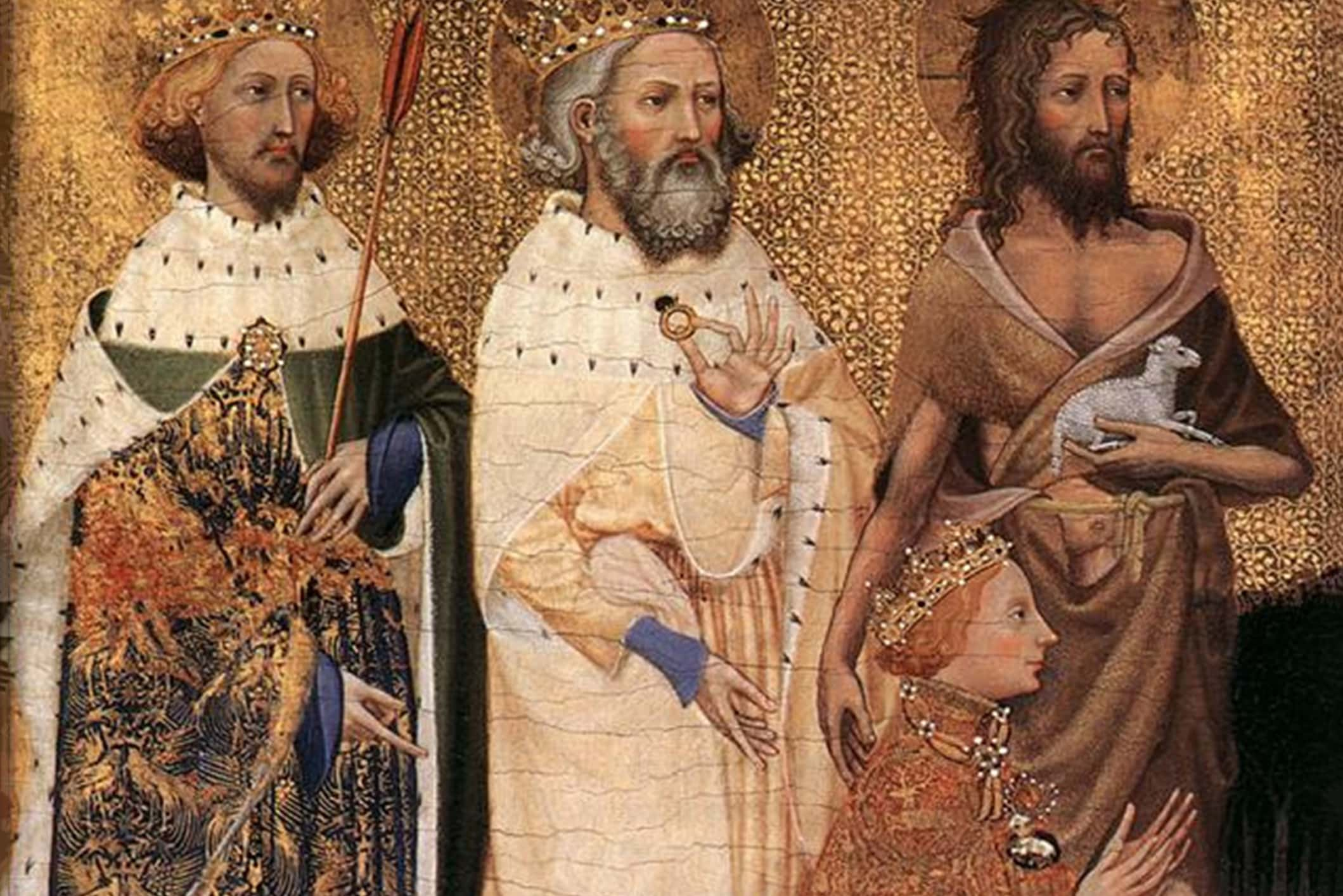 Wikimedia Commons Edward the Confessor
Wikimedia Commons Edward the Confessor
Rivals
Harald Hardrada of Norway claimed there was an old treaty between his country and England that stated if either nation's king died without an heir, the other would inherit both countries. Upon hearing of Edward the Confessor's heirless passing, Hardrada quickly began amassing his forces and prepared to attack Harold and claim England for himself.
But of course, this isn’t the story of Harald Hardrada’s conquest of England. At the same time, William, the Duke of Normandy, prepared to stake his claim on the island throne. According to William, not only had King Edward promised him England’s throne, but Harold Godwinson had even agreed with it. Whether or not that was true didn’t really matter at this point. Harold was King, Harald and William wanted the crown, and all three prepared to fight for it.
One Threat Down...
Hardrada struck first, landing in Northern England near the city of York, and so King Harold quickly made his way north to meet the invaders head-on. The Norwegian army was not expecting such quick retaliation from the English King, and Harold caught them completely by surprise at the Battle of Stamford Bridge on September 25, 1066.
The English utterly decimated the Norwegians, and Hardrada himself died in the fray. According to the histories, the Vikings sailed to England in 300 ships—but it took only 24 vessels to take the remnants of the army back to Norway. Many modern historians consider this disastrous defeat as the end of the Viking Age in Europe.
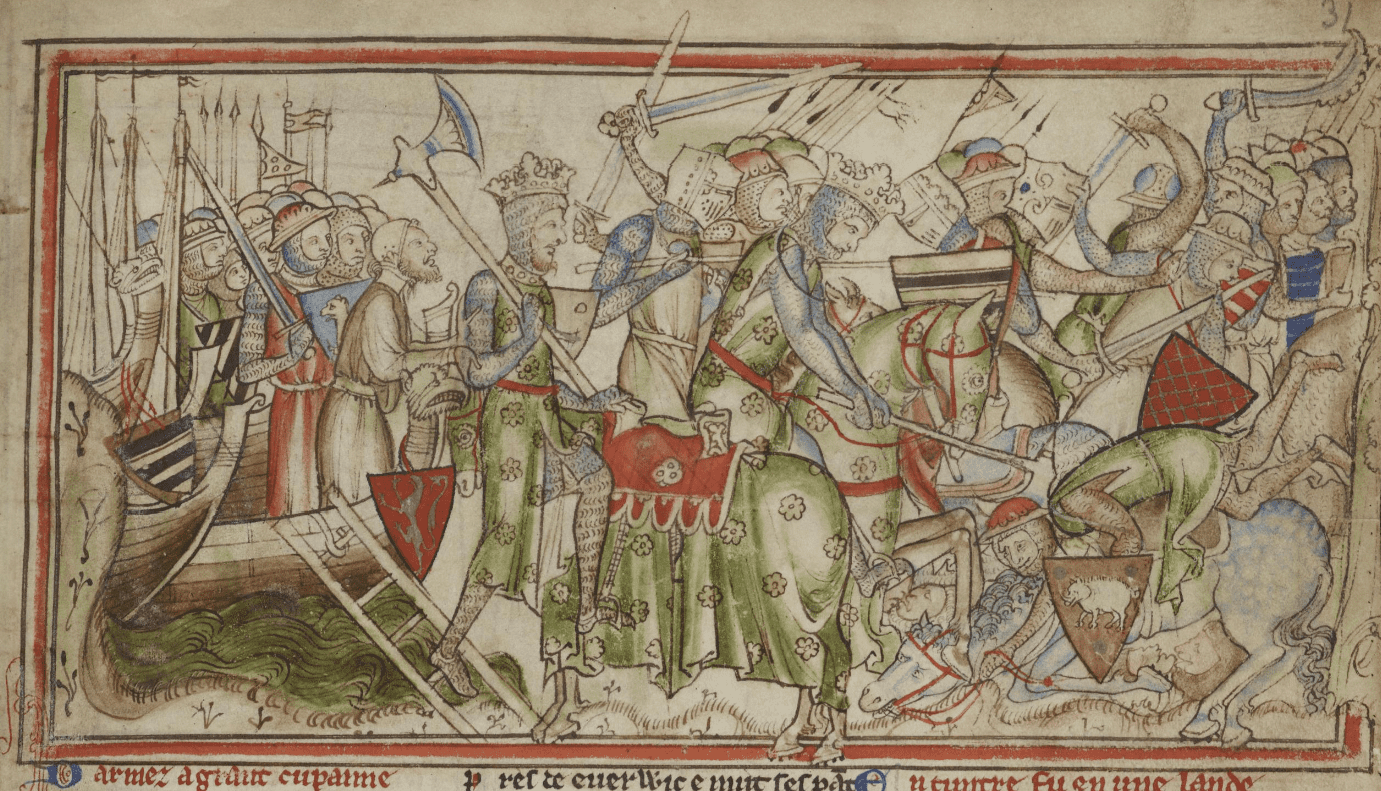 Wikimedia Commons Harald Hardrada
Wikimedia Commons Harald Hardrada
King Harold had dealt with one of the major threats to his rule, but it came at a cost. The battle weakened his army, and he still had William to deal with. In fact, he and his men were likely still limping back south when they heard the news that the Conqueror had made landfall near Hastings.
...And One to Go
William, Duke of Normandy, landed at Pevensey in Sussex on September 28, just days after Harold trounced the Norwegians. William quickly set up a base at Hastings, building a wooden castle there. He sent some raids out into the surrounding countryside, but mostly, he just waited. A reckoning was coming, one way or another.
William had spent months planning his invasion, gathering an army from all across Normandy, Brittany, and Flanders. Though his courtier stated that he brought 60,000 men with him, the actual number was more likely around 7,000. That, however, was more than a match for the depleted armies of the English king.
Harold had no choice but to face this new threat. After a grueling march south, in which he and his men trudged up to 30 miles per day, he stopped in London for a short respite before journeying to meet the Normans near Hastings.
The Eve of Battle
On October 14, 1066, the armies of King Harold Godwinson faced off against the Duke of Normandy and his men assembled from across Northern France. The Englishmen fought in the Anglo-Saxon style—on foot, equipped with massive, two-handed Danish Axes. While William’s blood had more Viking in it than Harold, his forces had far more refined tactics. The English army was entirely composed of infantry, but the invaders had distinct regiments of infantry, cavalry, and archers. They were equipped with longswords, maces, javelins, and lances.
The fighting began at 9 AM that morning and would go on until dusk that night. The long day was filled with wild fighting on blood-soaked hillsides. It saw panic, deception, the death of one king, and the creation of another. In the chaos of the battle, it's unlikely any of the soldiers understood the weight of their actions. Nonetheless, by the time the day was out, history would be forever altered.
The Battle of Battle
At this point, it’s probably worth pointing out that the Battle of Hastings…didn't actually happen at Hastings. While William had established a base at Hastings, the battle itself occurred a handful of miles to the northwest, at a site that the English have fittingly called "Battle" ever since.
The fighting occurred on marshy and forested terrain between two hills; Caldbec and Telham Hills, to be precise. Though many of the details are lost to history—it was nearly a millennium ago, after all—we still have a good idea what happened between those two knolls. For this, we can thank the writing of several contemporary historians and the famous Bayeux Tapestry, which portrays the events of William’s conquest in surprising detail.
An Uphill Battle
On the morning of the battle, Harold’s forces had set up on top of one of the hills, just at the crest of a steep slope. He kept his forces together in a tight formation, using the terrain to his advantage. The battle began with Norman archers firing up the hill at the English shield-wall, but they were ineffective
The Norman archers also ran out of ammunition quite quickly. Usually, you would simply pick up the arrows your enemy fired back at them. Yet since the English had few archers, there was no stream of counter-fire to replenish the Norman quivers. The Normans needed a change of plans. William ordered his spearman to crest the hill and meet the English axes head-on.This was no easy feat under the best circumstances.
The marshy terrain and steep slope made the advance difficult, but the steady rain of spears, axes, and large stones from the English made it next to impossible. After the spearmen failed to advance, William tried sending his cavalry up the hill—to the same result. At least for the start of the battle, things were not looking good for the Normans. In fact, the English forced them to retreat early on.
Then, to make matters worse, rumors began to spread through the ranks that the English had managed to kill William himself. The Normans began to flee in a panic. But, as you may have guessed, William was not dead. In order to prove he was still alive and kicking, the Conqueror lifted his helmet’s visor and rode through his ranks, screaming at the top of his lungs. With his men freshly inspired, William and his forces turned and began a counter-attack. The tides were beginning to turn.
Once More Unto the Breach
Historians believe there was a lull early in the afternoon, and William took a moment to consider his strategy. Building off the early fighting, William had his men attack the English shield-wall, feign retreat, and then turn on their pursuing enemies as they broke formation. This proved very effective, and the English ranks began wearing thin.
The fighting was absolutely brutal. One history describes that day as a “great slaughter on both sides." William’s own chronicler, William de Poitiers, wrote that “far and wide, the earth was covered with the flower of the English nobility and youth, drenched in blood." On the English side, the shield-wall was so tightly packed that dead bodies could barely fall to the ground.
Medieval warfare was nothing short of a nightmare.
The King and the Conqueror
As the battle raged, William the Conqueror frantically rode across the field, barking orders and inspiring his men to fight on. One account says that two of his horses died beneath him before the day was out. Another account said it was three.
Though there are few accounts of Harold’s actions during the battle—after all, the winners get to write history—he allegedly managed to survive most of the day’s fighting. As the day was nearing its end, the last Anglo-Saxon king was finally killed, although we don’t know for sure how he died. The panel in the Bayeux Tapestry that depicts his death shows a fallen soldier with what appears to be an arrow in his eye.
This has led to the often-repeated legend that the king died after an arrow pierced through his eye into his brain. However, any written accounts of this came from long after the battle, so it’s hard to say for sure. Regardless of how it happened, Harold was dead. Many English soldiers started frantically fleeing the battlefield—though several chroniclers reported that the men from the king’s own household surrounded his body and fought bravely until the bitter end.
A King's Remains
The sun had set on the Battle of Hastings. By the time it rose in the morning, the world was a different place. Anglo-Saxon England was dead, and a French Viking was about to claim the throne, forever altering the history of the British Isles. In the calm of the next morning, the toll of the battle became clear. It’s estimated that around half of the English forces died at the Battle of Hastings, while around one in seven Normans met the same fate. While the Normans collected their fallen comrades, they left the bodies of dead Englishmen to rot.
It’s unknown what exactly came of Harold's body. At some point, soldiers identified the royal corpse, and they presented William with the deceased king’s standard. One source claims that Harold’s mother offered William her son’s weight in gold to return Harold's body to her, but William refused. Instead, William ordered his men to throw Harold's remains into the sea, though no one's sure whether or not this ever happened.
There are all kinds of legends about Harold’s final resting place. Some believe that Englishmen managed to steal his body away and bury it at Waltham Abbey—a church that Harold himself had founded. Others have claimed that Harold didn’t even die in the Battle of Hastings. Rather, he escaped the fray in secret and lived out the rest of his days in Chester as a hermit.
 Shutterstock
Shutterstock
A New World
Whatever happened to the old king, one thing is certain: William was victorious. At the Battle of Hastings, he finally became William the Conqueror. Though he still faced some scattered resistance, the Anglo-Saxon cause died with Harold. Indeed, the last of the English leaders formally surrendered to him in the final months of 1066.
Ealdred, the Archbishop of York, crowned William the King of England on Christmas day, 1066, in Westminster Abbey. Over the next two centuries, the English kings were now French.


